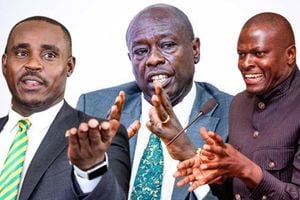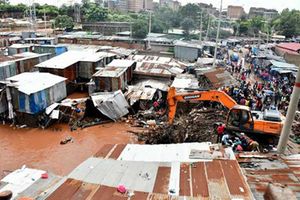The people behind Kisumu street names

Unlike Nairobi and Mombasa which have an English feel, the lakeside city has an African feel. PHOTO| FILE
What you need to know:
Of course you will find there the names of the two great Luo rivals in the struggle for Independence – and after – Tom Mboya and Oginga Odinga. These are Kenyan nationalists who need no introduction from me.
But I do have a story about Tom Mboya that, I think, hasn’t been widely told before – and one that has as a very sad irony about it.
When I first travelled around Kenya back in 1967 (as a very green and young man, let me add), I found Nairobi had much of a European character – in its manners as well as its architecture.
For instance, I was refused entry to one of its restaurants because I wasn’t wearing a tie. And, 20 years later, I understood my Belgian wife when we came back to the city and she said, “In some ways Nairobi is more English than England!”
Mombasa, though, had – and still has – the feel of an Indian Ocean city – also in its manners as well as in its architecture. It has a fascinating mix – Ali Mazrui called it a clash – of cultures. In contrast to both these cities (in its manners if not in its architecture) Kisumu was in 1967 – and I think still is – an African city. And this shows in its street names.
Of course you will find there the names of the two great Luo rivals in the struggle for Independence – and after – Tom Mboya and Oginga Odinga. These are Kenyan nationalists who need no introduction from me.
But I do have a story about Tom Mboya that, I think, hasn’t been widely told before – and one that has as a very sad irony about it.
I had a conversation with Sir Michael Blundell, a settler politician, proponent of multi-racialism in the lead-up to Kenya’s independence, and a man who had engaged in verbal duels with both Mboya and Odinga at the pre-Independence Lancaster House Conferences.
I suggested to Blundell that Mboya might have become the first African Secretary General of the United Nations had he not been assassinated in 1969.
“That’s amazing you say that,” Blundell said. “You know, just a few weeks before he was killed, he was visiting me here in this house. He told me, ‘Michael, I think my time is up here. I am thinking of leaving Kenya to work with the UN’.”
When I met Odinga at the New Kisumu Hotel in 1973 he had not been long out of detention. He was a rather frail but still a flamboyant figure – in his dress and manners so different from Mboya, who portrayed himself as the modern African politician, eager and able to compete in a progressive and industrialised world.
Significantly, Odinga had jettisoned his Christian names. How many of you will know that those names were Obadiah Adonijah? So different from the more familiar “Tom”!
In his autobiography, Love Affair with the Sun, Blundell describes Odinga as a “charming, idiosyncratic individual”. He claims that, as they presented themselves at the Lancaster House Conferences, the rift between Mboya and Odinga was that, whereas Mboya wanted a modern Kenya, Odinga represented African traditions.
Understandably, there are many people’s names for the streets of Kisumu. Among them is Achieng’ Oneko. He was one of the Kapenguria Six – the Kenyan nationalists who were arrested in 1952, tried at Kapenguria in 1952–53, and imprisoned in northern Kenya. He became a member of the first Kanu government. He was a great friend and confidant of Odinga, and he left Kanu with Odinga when he established the Kenya Peoples Union (KPU) in 1966.
KPU must have been one of the very few political parties in Africa founded on policies rather than on personalities or ethnicities. It had a distinctly and unashamedly socialist manifesto – but it soon became seen as mainly a Luo party.
Unlike the two other cities I have featured in this series (unless I have missed something), Kisumu celebrates a sportsman in its street names.
There is a Joe Kadenge Road, named after the footballer who played for Abaluhya FC (later called AFC Leopards), and was a player, coach and manager of the Harambee Stars. There is also a Gor Mahia Street, but I don’t know if this is in honour of the legendary medicine-man from Kanyanwa, Homa Bay, or the famous Luo football team that took his name and also took on the main rival team, Leopards.
And there are many names like these: Awour Otieno, Ishmael Noo Ooro, Awour Otieno, Adala Otuke, Omelo Agar, Mark Asembo...
When I was working on the street names of Nairobi and Mombasa and came across names I didn’t know, I googled them and found entries. But when I did the same for those I have listed above, I found nothing on Google to help me.
What does this say about Kisumu and its champions? For one thing, doesn’t it show that there is a need for more documentation of the city and its region’s history? When I was in Kisumu a few weeks ago at the official opening of the Acacia Premier Hotel, the contrast with the town I remember from 1967 was very striking. Yes, Kisumu is moving forwards – but shouldn’t it also be looking backwards to celebrate its past?
John Fox is Managing Director of iDC





